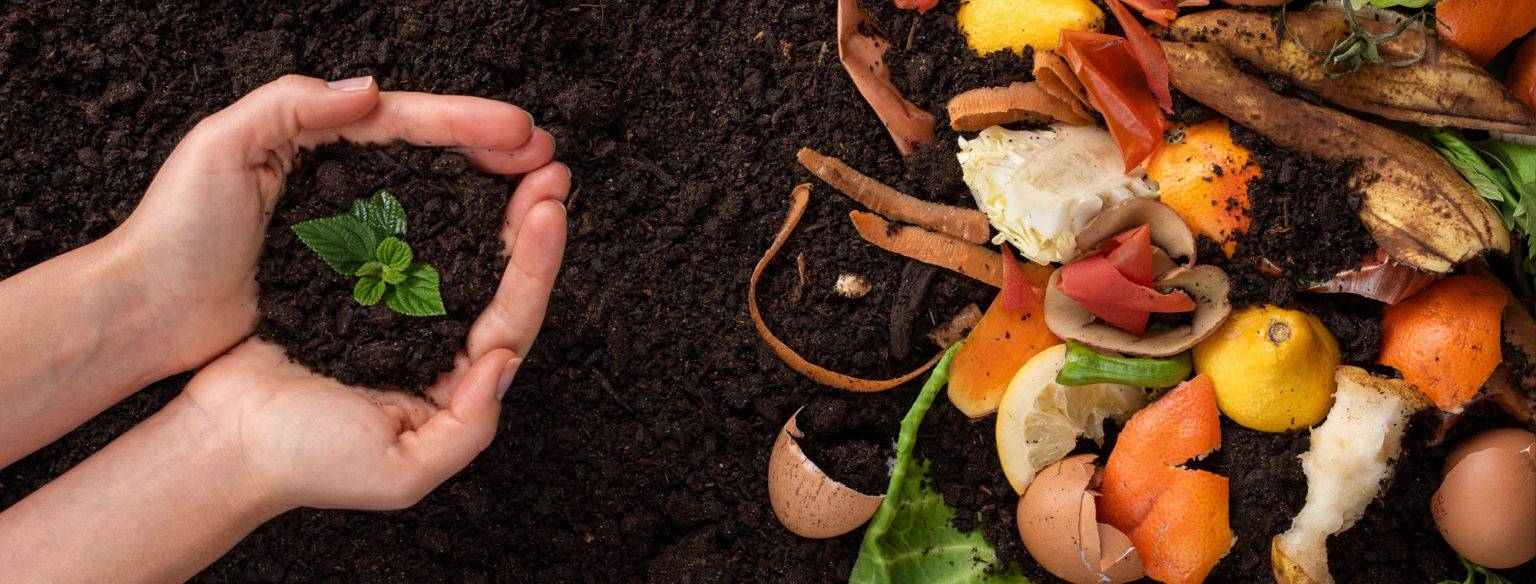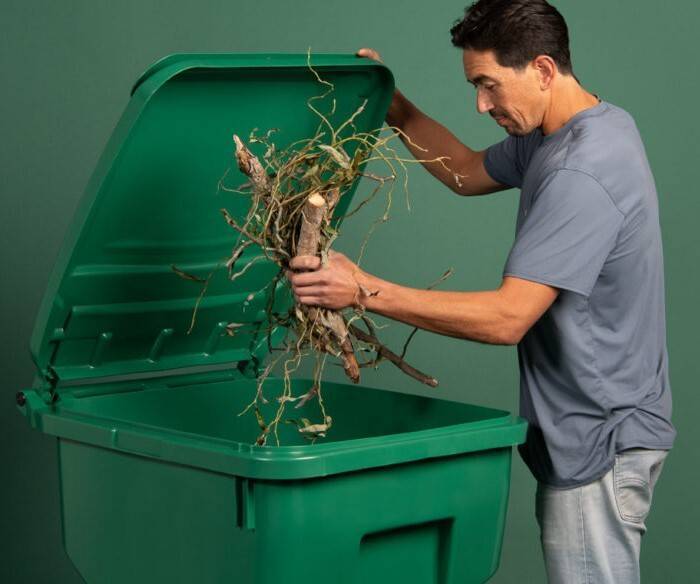Join the movement to turn food into soil with San Diego’s collective response to reducing food waste.
Overwhelmed, confused, or annoyed with the new City of San Diego’s organic waste recycling program? Or excited and eager to get started as you impatiently wait for your new green bin? Maybe it has arrived and you are struggling to create a new habit? No matter your emotional state toward the new program for City residents, harnessing the power of food waste into nutrient-rich compost doesn’t have to be overly complicated or smelly.
San Diego County creates 500,000 tons of food waste each year, with most of that entering our landfill, creating methane gas and pollutants in our air. So, that’s 500,000 tons of rotting gold that we as a community can divert back into our soil as nutrient-rich compost. Oh, and that compost … is FREE! Talk about investing in our local food web. You recycle your food waste, it’s processed into compost, pick it up for free, and use it in your home garden. Repeat!

Home Composting
We have been home composting for roughly five years now. A small countertop bin collects our food scraps from banana peels and eggshells to carrot tops and moldy bread. We have shifted our food scraps from the trash to the compost bin. It is second nature and my kids, 8 and 10, have known the drill for years.
Once or twice a week, I walk the bin out and toss it in our active compost bin, a large black plastic bin we got discounted from the city’s composting program years back. This is where discarded food, green waste (i.e., grass clippings), and brown material (i.e., leaves) go. I save a handful of the yummy scraps for the worms, who live a happy existence in their vermicompost bin. Another bin is for our finished compost that I use in the garden. Every few weeks, I take my pitchfork and let my inner farmer out and turn the compost. I’m all in and I love it! I also realize this isn’t everyone’s jam or feasible.
Making Composting Accessible
The revamped organic waste recycling program is a result of SB 1383, which requires the state to reduce the amount of organic waste entering landfills by 75%. The new program will mix all food waste, including food-soiled paper products, meat, and leftovers with our yard waste, turning it into compost. With very little effort, residents who don’t have the resources or desire to home compost can join our local food web and create compost for all. For home composters, like us, it will allow us to compost things that our home system couldn’t handle like meat, soiled paper goods, or mysterious leftovers.
Take a trip to the Mirimar Landfill and you can fill your pickup truck up with compost for FREE or pay a whopping $12 for staff to load it for you. I just went and pro tip: Pay the $12 and let the front loader do the work!
Five Easy Tips for Composting Success
But what about the smell? The animals? The last thing I want is rats and my yard to smell like garbage. Breathe, it’s okay. The new green bins, just like our trash and recycling, have a sturdy heavy lid, which if you haven’t noticed does a pretty good job of keeping your trash smell in. Plus, the service will now be offered weekly. For reassurance, we haven’t had issues with odor or animals in the five years we have been composting in our front yard.
Plus, with these five easy steps, you can eliminate most of the YUCK factor people are worried about and make this program a success, because yes, it starts with YOU!
- Most households will not come close to filling their green bin, which ranges in size from 35 to 95 gallons unless you produce weekly green yard waste. If this is true for you, an option could be a communal bin with neighbors. Composting with your neighbors is a great way to build community and encourage participation in the program. You can also request to downsize your bin to a smaller size through the Get It Done App.
- Line the bottom of your bin with newspaper or green waste before adding food waste. This will help absorb moisture, reduce potential odor, and keep the bin cleaner. Next, treat it like a lasagna and layer your food waste with yard waste.
- If you lack green waste, consider having a bin of mulch next to your green bin. You can cover your food waste with a little mulch each time. You can get mulch for free at the landfill too!
- Before you toss anything into your bin, remember to take off any plastic wrapping, stickers, or ties to eliminate trash from mixing with the future compost.
- If possible, keep it in a shady area and remember to put it out weekly, no matter if it’s full.
What to Compost or Not
For the Green Bin:
- Fruits and vegetables
- Yard trimmings like grass, weeds, leaves, flowers, branches, and untreated wood
- Eggs/eggshells
- Dairy products
- Meat
- Bread products
- Leftover food, like pasta, pizza, or that mystery Tupperware in the back of your fridge
- Coffee grounds and paper filters
- Food-soiled paper towels, napkins, paper plates, pizza boxes, and paper bags
For the Black Bin:
- Plastic bags or food containers
- Any products labeled “biodegradable” or “compostable” (these items do not break down fast enough for the city’s system and will contaminate the compost)
- Grease
- Treated wood, dirt, or rocks


